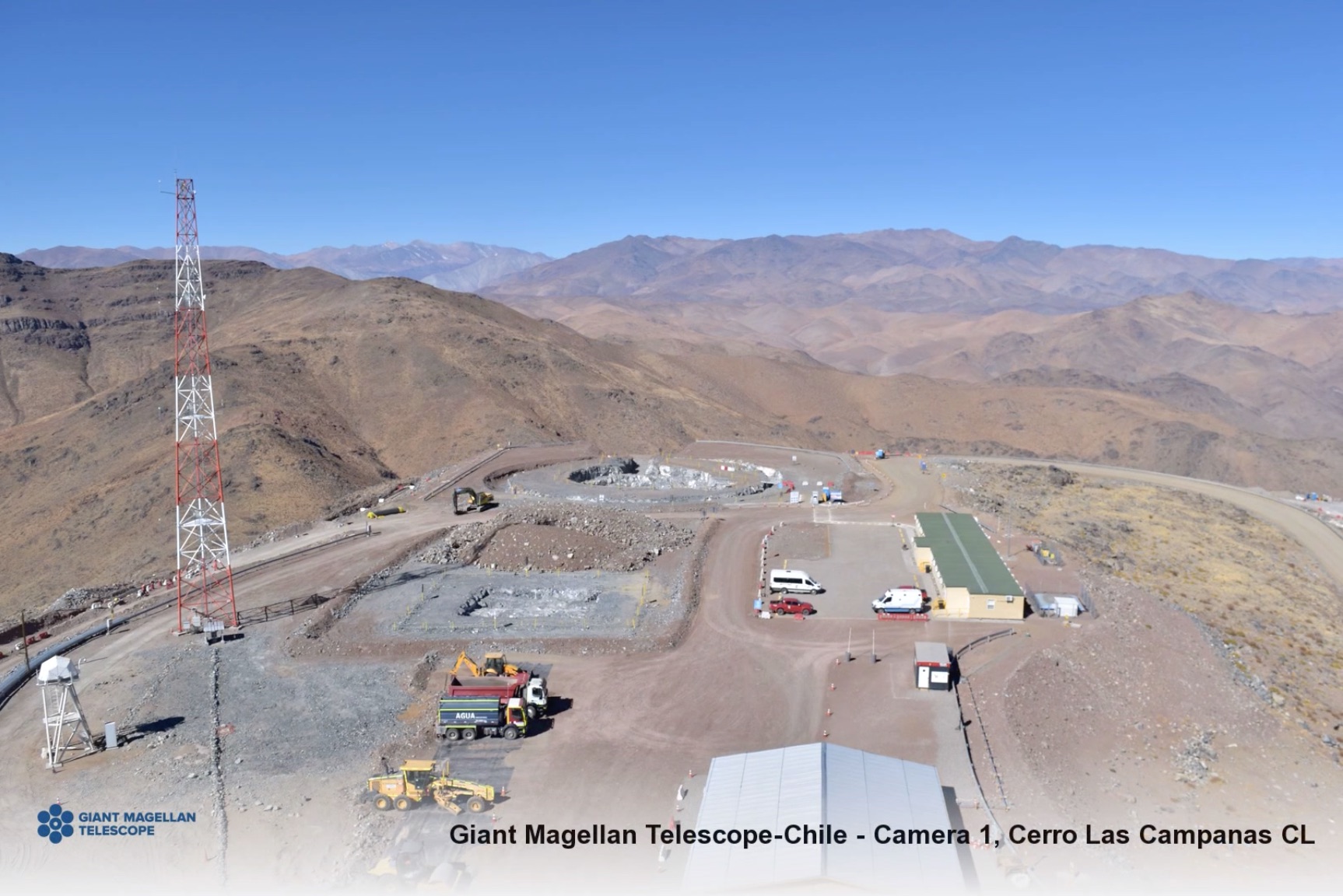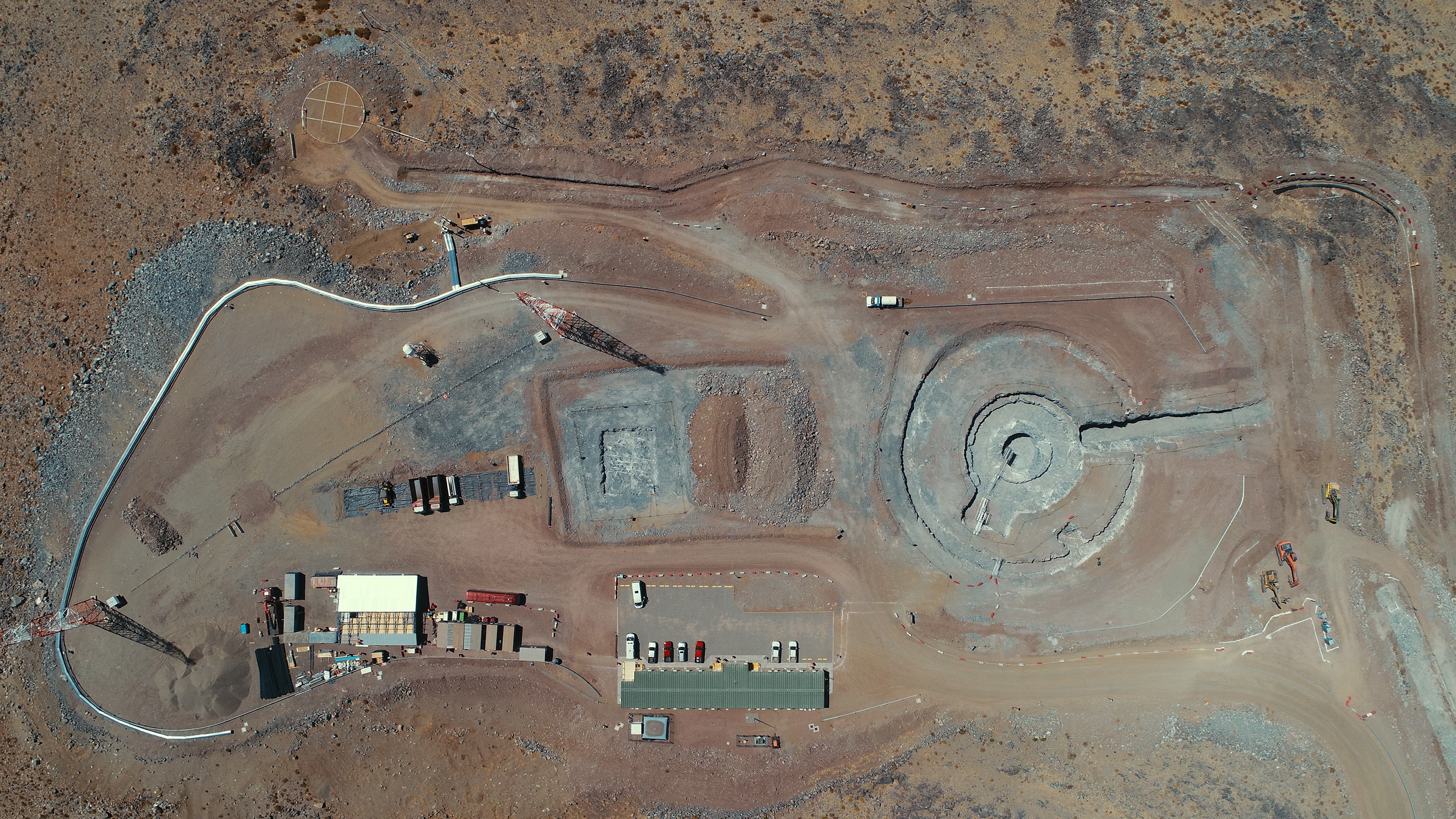
An arid mountaintop in the Chilean Andes is being transformed into a next-generation astronomy hub.
Hard-rock excavation at the Giant Magellan Telescope (GMT) site — a patch of rocky desert 8,200 feet (2,500 meters) above sea level, about a 2-hour drive from the coastal town of La Serena — wrapped up in March. And the project team recently selected a contractor to build the mount, a steel structure that will house the huge telescope's mirrors and scientific instruments.
"This is the core of the observatory," said Robert Shelton, president of the GMTO Corp.
Related: Gallery: The Giant Magellan Telescope Envisioned in Chile
Mount construction "is the single largest procurement we will be involved with — anywhere from $120 million to $140 million," Shelton told Space.com.
Total costs for the project are expected to exceed $1 billion, he added.
The GMT will integrate seven primary mirrors to form a light-collecting surface 80 feet (24.5 m) wide, giving the scope a resolving power 10 times greater than that of NASA's Hubble Space Telescope. (The scope will also employ seven smaller secondary mirrors, which will bounce light from the primaries down to a camera system.)
Get the Space.com Newsletter
Breaking space news, the latest updates on rocket launches, skywatching events and more!

The GMT will therefore be able to make groundbreaking observations in a number of fields, project team members have said. For example, the megascope will scan the atmospheres of nearby alien planets for possible signs of life, help astronomers understand how the first galaxies formed, and gather data that could shed light on mysterious dark matter and dark energy.
Five of the primary mirrors have already been cast, at the University of Arizona's Richard F. Caris Mirror Laboratory. One of those five is completely done, and the other four are in various stages of processing. (It takes a long time and a lot of exacting work to turn a raw cast mirror into a precisely polished finished product.)
Each primary mirror, by the way, is about 27 feet (8.4 m) wide — so big that these key pieces will have to travel to Chile by boat.
Related: Report from Chile: Giant Magellan Telescope Groundbreaking
Shelton said he expects the GMT to start observing the heavens in 2026, with just four or five of the primary mirrors installed.
"As soon as we have the mount, the enclosure, the utilities and the first couple of instruments, there's no reason to wait for mirrors six and seven," Shelton said. "We'll go for that, start the engineering studies. There will always be surprises in a project this big, so let's get those going, work out the surprises and start doing science as soon as we can."
The telescope should be fully up and running by 2028, he added.
The GMT team must overcome a number of technical challenges to achieve their ambitious goals. Managing the scope's huge data haul will be difficult, for example, and the primary mirrors' surfaces must be pretty much perfect. (They can only be off by about 20 nanometers — roughly the width of a single glass molecule.)
But the toughest hurdle probably involves funding, Shelton said. GMT is a privately run project and must work hard to bring money in on schedule, from both donors and institutional partners such as universities (whose contributions will get them observing time and access to project data).
"I'm confident we're going to get the funding we need, but we also need to get it on the timeline we need," Shelton said. "And the longer you take to build it, the more it costs."
GMT isn't the only megascope in development. Two others are scheduled to come online in the mid-2020s as well — the Thirty Meter Telescope in Hawaii and the Extremely Large Telescope, on another high and dry Chilean peak.
These three scopes will have similar aims. But they won't be redundant, Shelton said.
For example, the trio will provide coverage of both the northern and southern skies, he pointed out. And their science instruments won't be identical.
Accounting for bad weather and the time needed to do engineering work, each scope will likely have about 320 observing nights per year, he said. So, there'll be about 960 nights available annually on these powerful instruments — nowhere near enough to satiate scientists' wants and needs.
"The astronomy community will gobble that up," Shelton said.
Time on these scopes, which will seek to answer some of the biggest questions in science, will be precious for decades to come, he added.
"These observatories are going to last 50 years," Shelton said.
- Gallery: The Giant Magellan Telescope Envisioned in Chile
- Photos: Casting Mirror No. 5 for the Giant Magellan Telescope
- 10 Biggest Telescopes on Earth: How They Measure Up
Mike Wall's book about the search for alien life, "Out There" (Grand Central Publishing, 2018; illustrated by Karl Tate), is out now. Follow him on Twitter @michaeldwall. Follow us on Twitter @Spacedotcom or Facebook.
Join our Space Forums to keep talking space on the latest missions, night sky and more! And if you have a news tip, correction or comment, let us know at: community@space.com.

Michael Wall is a Senior Space Writer with Space.com and joined the team in 2010. He primarily covers exoplanets, spaceflight and military space, but has been known to dabble in the space art beat. His book about the search for alien life, "Out There," was published on Nov. 13, 2018. Before becoming a science writer, Michael worked as a herpetologist and wildlife biologist. He has a Ph.D. in evolutionary biology from the University of Sydney, Australia, a bachelor's degree from the University of Arizona, and a graduate certificate in science writing from the University of California, Santa Cruz. To find out what his latest project is, you can follow Michael on Twitter.









